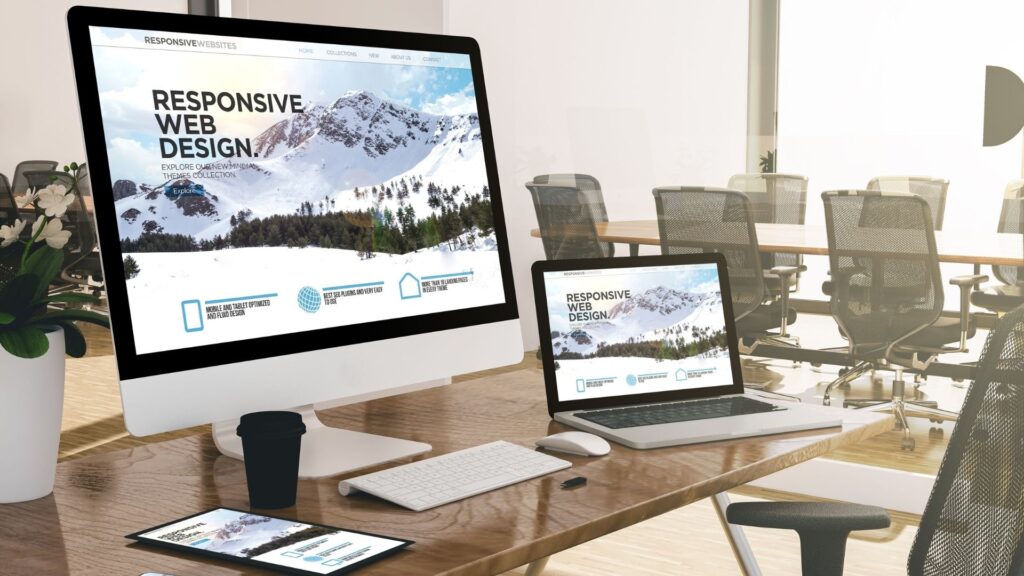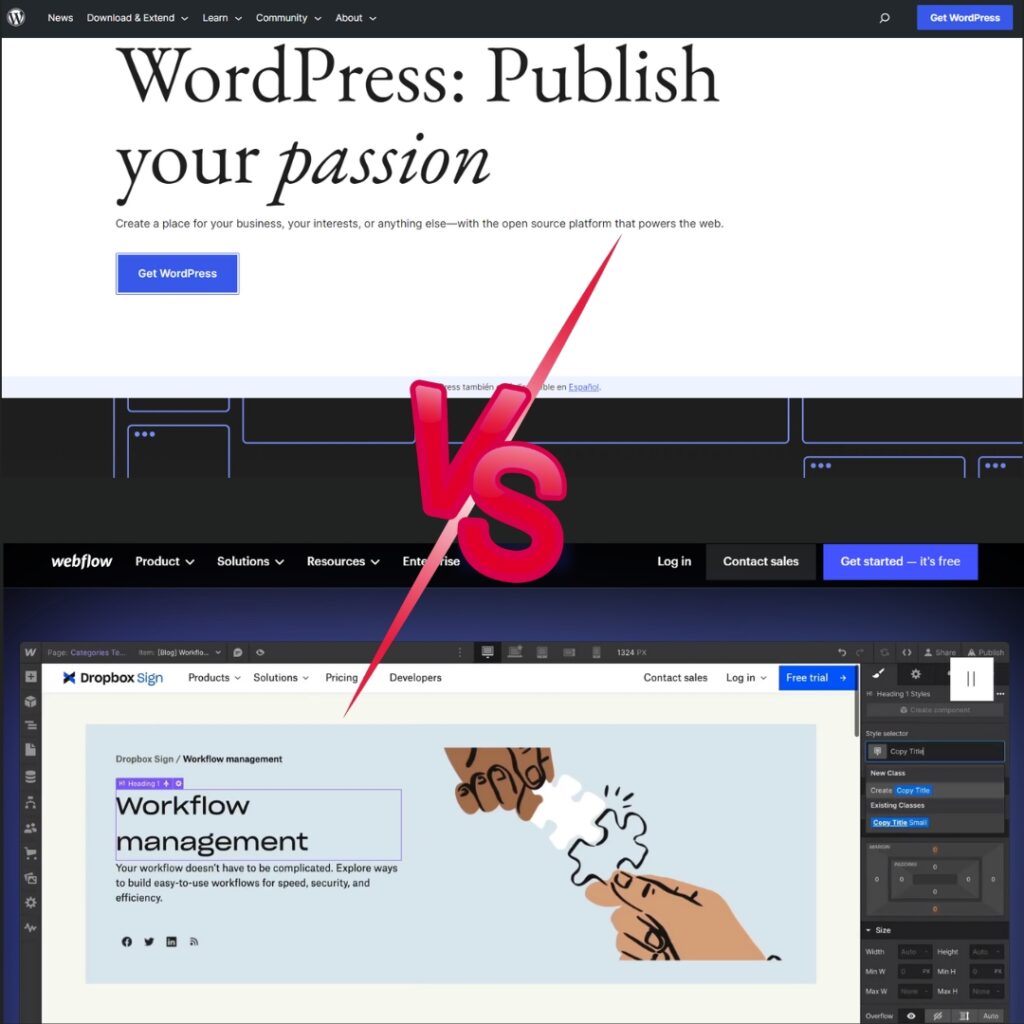What Is a Landing Page and How It Works

Today Digital Marketing is filled with options that allow entrepreneurs to boost their sales on various platforms, like social networks, blogs, SEO positioning posts, and others. An excellent or straightforward landing page has been one of the most effective strategies that increase the profitability of your business with a measurable value through the conversion of potential users.
In its primary meaning, a landing page is a page with specific information that motivates visitors of the website to contact them by clicking a button or sell them a product present on the page. Why is a landing page important? highlight products, services, or promotions you are offering, intending to get the user to act.
A well-executed landing page must avoid distractions and guarantee conversion for your digital marketing. Landing pages are mainly used for SEM (search engine marketing). Google Ads usually places landing pages in the first three website searches, providing its users with only limited information through the page’s meta description. Once the user clicks the URL link of the website, they will now be able to see the full content of the landing page.
What is the purpose of the Landing Page?

We use landing pages to get leads. That is visits that leave information about the user and their reason for visiting your website, which results in sales opportunities for your company.
In the world of Digital Marketing, it’s not enough to receive many visitors to your website; we should also use various strategies for you to achieve conversion by approaching your potential customers. Here are the uses of landing pages:
- Builds empathy and trust.
- Understand who are those who view your content and if viewers have the profile of your target customer.
- Offer your sales department possible leads so they can have opportunities to acquire and deal with negotiations.
- Facilitate lead scoring, prioritizing the leads with the best potential through information points for every user/visitor based on the actions.
How do they work?

The ultimate objective of a landing page is to convert visitors into final customers by obtaining their personal information. The primary step is capturing the user’s attention through call-to-action buttons encouraging them to click and complete.
The number of downloads converts into personal customer data, which is the ideal opportunity to interact with them and eventually influence their decision to purchase the product or service.
How Can Landing Pages Benefit Marketing Campaigns?
Landing pages are a pivotal tool in digital marketing, offering numerous benefits that can significantly enhance the effectiveness of marketing campaigns. Their core advantages stem from their focused and tailored design, which is geared towards achieving specific campaign goals. Here are some key ways landing pages can benefit marketing campaigns:
- Increased Conversion Rates: Landing pages are designed with a single objective, such as encouraging a purchase, signing up for a newsletter, or downloading a resource. This focus helps streamline the user experience and guides visitors towards taking the desired action, thereby potentially increasing conversion rates.
- Targeted Messaging: Since landing pages are often linked to specific marketing campaigns or offers, they allow for more targeted and relevant messaging. This relevance can engage visitors more effectively than a general webpage, as the content directly addresses their interests or needs.
- Data Collection and Lead Generation: Landing pages are excellent tools for collecting information about potential customers. By offering something of value in exchange for contact details, businesses can build a database of leads to nurture through their marketing funnel.
- Testing and Optimization: The isolated nature of landing pages makes them ideal for A/B testing. Businesses can experiment with different elements like headlines, calls to action (CTAs), images, and overall layout to see what resonates most with their audience and optimize accordingly.
- Improved Ad Performance: When used in conjunction with digital advertising, landing pages can improve the performance of ads. By providing a page that is directly relevant to the ad’s message, it creates a cohesive user experience, which can enhance the effectiveness of the ad campaign.
- SEO Benefits: Although landing pages are often associated with paid campaigns, they can also be optimized for search engines. Well-crafted landing pages with quality content can rank in search engine results, attracting organic traffic.
- Brand Consistency and Awareness: Landing pages allow for the reinforcement of brand elements and messaging. This consistency helps in building brand awareness and trust, which are critical for long-term customer relationships.
What are the Differences Between Lead Generation and Click-Through Landing Pages?
Landing pages in digital marketing can broadly be categorized into two types: Lead Generation Landing Pages and Click-Through Landing Pages. Each serves a distinct purpose and is structured differently to meet its specific goals. Understanding the differences between these two types of landing pages is crucial for marketers to effectively design and utilize them in their campaigns.
Lead Generation Landing Pages
- Purpose: The primary objective of lead generation landing pages is to collect lead data, such as names and email addresses, which can be used for marketing purposes like email campaigns or sales outreach.
- Content and Structure: These pages typically include a form as their central element, accompanied by persuasive copy and possibly an incentive (like a free e-book, webinar registration, or a discount code) to encourage form submission.
- Call to Action (CTA): The CTA on these pages is usually focused on form submission, such as “Sign Up”, “Get Your Free Guide”, or “Join the Webinar”.
- Use Cases: They are commonly used in email marketing campaigns, social media advertising, or as part of content marketing strategies (like downloading a white paper or report).
- Measurement of Success: Success is usually measured by the number of leads generated – i.e., how many visitors filled out the form and submitted their information.
Click-Through Landing Pages
- Purpose: Click-through landing pages are designed to ‘warm-up’ potential customers to a product or offer before sending them further down the conversion funnel, typically to a shopping cart or checkout page.
- Content and Structure: These pages are more focused on detailed information about a product, service, or offer, with less emphasis on forms. The content is designed to educate and persuade the visitor.
- Call to Action (CTA): The CTA for click-through pages is typically geared towards moving the visitor to another page to complete a transaction or take the next step, such as “Buy Now” or “Learn More”.
- Use Cases: They are often used in e-commerce and for products or services that require more detailed information before a purchase decision is made.
- Measurement of Success: The effectiveness of click-through landing pages is generally measured by the conversion rate, indicating the percentage of visitors who click through to the next step in the purchase process.
How Can Someone Create a Landing Page Without Coding or Design Skills?
Creating a landing page without coding or design skills is quite feasible today, thanks to a variety of user-friendly tools and platforms. For starters, one needs to choose a suitable landing page builder such as Canva, Wix, Squarespace, Unbounce, or Leadpages. These platforms offer an array of pre-designed templates, which can be a great starting point. Once a template is selected, it can be customized using drag-and-drop editors to alter text, colors, images, and other elements to match specific brand requirements and campaign goals. Adding compelling content is the next crucial step, where the focus should be on creating clear, concise, and persuasive headlines, body text, and multimedia elements.
For lead generation pages, it’s important to incorporate forms for collecting visitor information, and for click-through pages, a clear call-to-action (CTA) should be included to guide visitors to the next step in the conversion process. Another vital aspect is ensuring the landing page is mobile-responsive, as many users access websites on mobile devices. After customizing the design, it’s always a good practice to preview the page to check for errors or design issues and test the overall user experience.
Once the landing page is ready and tested, it can be published and shared through various marketing channels like social media, email, or digital ads. Lastly, leveraging the built-in analytics tools of these platforms to track the landing page’s performance is crucial for understanding its effectiveness and making necessary optimizations. This approach allows anyone, regardless of their technical background, to create and manage effective landing pages that align with their marketing objectives.

What are the Key Elements of a Successful Landing Page Design?
A successful landing page design is crucial for converting visitors into leads or customers. It’s not just about looking good; the design must be functional and focused on guiding visitors towards taking a desired action. Here are the key elements that constitute an effective landing page design:
- Clear and Compelling Headline: The headline is often the first thing a visitor sees, so it needs to be attention-grabbing and clearly convey the value proposition. It should be concise yet powerful enough to engage the visitor immediately.
- Persuasive Subheadings: Subheadings should support the main headline and offer additional information. They break up the text for easier reading and guide the visitor through the page.
- High-Quality Images or Videos: Visuals play a crucial role in landing page design. They should be relevant, high-quality, and help to reinforce the message. Videos can be particularly effective in demonstrating a product or service.
- Engaging and Concise Copy: The copy should be focused, easy to read, and speak directly to the visitor’s needs or problems. It should highlight the benefits of the offer and what sets it apart from competitors.
- Strong Call-to-Action (CTA): The CTA is perhaps the most critical element. It must stand out and be clearly visible. The wording should be action-oriented and create a sense of urgency or value.
- Simple, User-Friendly Form: If the goal is to collect information, the form should be as simple as possible. Ask only for necessary information to avoid overwhelming the visitor.
- Trust Signals: Testimonials, customer reviews, endorsements, or security badges can greatly enhance trust and credibility. They reassure visitors about the quality and reliability of the offer.
- Mobile Optimization: With an increasing number of users accessing websites on mobile devices, the landing page must be responsive and provide a seamless experience across all devices.
- Minimal Distractions: A successful landing page should be free from distractions like excessive links, navigation menus, or unrelated information. The focus should be on keeping the visitor engaged with the content and CTA.
- Aesthetic Appeal and Brand Consistency: The design should not only be visually appealing but also consistent with the brand’s colors, fonts, and overall style. This consistency helps in reinforcing brand recognition.
- Fast Loading Speed: Page loading speed is crucial for user experience. A slow-loading page can lead to high bounce rates, which negatively impacts conversions.
Incorporating these elements effectively in a landing page design can significantly increase the likelihood of achieving the desired action from visitors, whether it’s signing up, making a purchase, or downloading a resource. It’s a blend of art and science, requiring a deep understanding of both design principles and user psychology.

How to Choose the Right Landing Page Builder for Your Business?
When choosing the right landing page builder for your business, prioritize an intuitive and user-friendly interface, particularly if you lack advanced technical skills. An ideal builder should offer a drag-and-drop editor, simplifying the design process. Customization is key, so ensure the builder allows for extensive personalization to align with your brand and campaign needs, including a variety of design, font, color, and media options. A diverse selection of industry-relevant templates can significantly streamline the creation process.
Mobile responsiveness is non-negotiable in today’s digital landscape, where mobile traffic is predominant. Your chosen builder should automatically optimize pages for mobile devices, ensuring a seamless user experience across all platforms. Integration capabilities are also vital; the builder must seamlessly work with other tools you use, like email marketing services, CRM systems, and analytics tools, for efficient workflow and data analysis.
SEO and performance features are crucial for online visibility and user experience. Opt for a builder that supports SEO through editable meta tags and prioritizes fast loading times. A/B testing tools are invaluable for optimizing your landing pages for higher conversions, so check for easy-to-use testing functionalities.
Comprehensive analytics and reporting are essential for understanding and optimizing the performance of your landing pages. Ensure your builder provides detailed insights into page performance. Don’t overlook the importance of compliance and security, especially in adhering to data protection regulations like GDPR.
Customer support and access to a library of tutorials and resources can be particularly beneficial, especially if you’re new to landing page creation. Factor in the builder’s pricing structure and scalability, ensuring it aligns with your budget and can accommodate your business’s growth. Lastly, consider user reviews and the builder’s overall reputation to gauge its reliability and performance in real-world scenarios.
By thoroughly evaluating these aspects, you can select a landing page builder that not only meets your immediate needs but also supports your evolving digital marketing goals, ensuring the creation of effective landing pages that resonate with your audience and contribute to your marketing success.
Tips for a good Landing Page:
Tip #1
Write clearly and concisely. A good landing page is as clear and concise as possible, and users must understand its contents easily.
Tip #2
Clearly explain the value and importance of the offer to the users. The most important thing is to offer value to the person, focusing on getting the most out of the content provided to them.
Tip #3
Use listings to make information easily understandable. Listings help us focus the user’s attention on the points that we consider most important and what else may be helpful to them. It is about giving relevance to the benefits of our content.
Tip #4
Select the appropriate number of fields for the form. We must not require the users to put a considerable amount of their information because that may make them turn back. The idea is to build a long-term relationship and, for this, we will have more opportunities to exchange information.
Tip #5
Eliminate the main menu and the rest of the links that may distract the user. With the main objective of focusing attention on the offer, everything that adds value must be removed.
Tip #6
Include relevant multimedia information that captures the user’s attention. Multimedia content makes it better in the eyes of the users. A good video or image can help to improve the perception of our users.
Tip #7
Add icons to share on social networks. If users consider the content of interest, they will undoubtedly want to share it on social media networks. So why not provide it to them through some icons at the end of the content?
Tip #8
Add testimonials if they provide relevant information. Content that others have already enjoyed and had a good rating will help convince customers to purchase a product or service they like. It is better to include and show awards or recognitions received by the organization on your landing page. Do not miss the opportunity to include recognitions that your business received on the landing page. Pages that have awards or recognitions presented in the content make the users value and appreciate it more.
Let us help you build the website of your dream!
Do you want a stunning website? Get in touch with us now. Give us a call at 647-689-6069 or send an email at amir@canadianwebedsigns.ca to get your free quotations. You can also leave your inquiry by filling up the form in our website contact page.